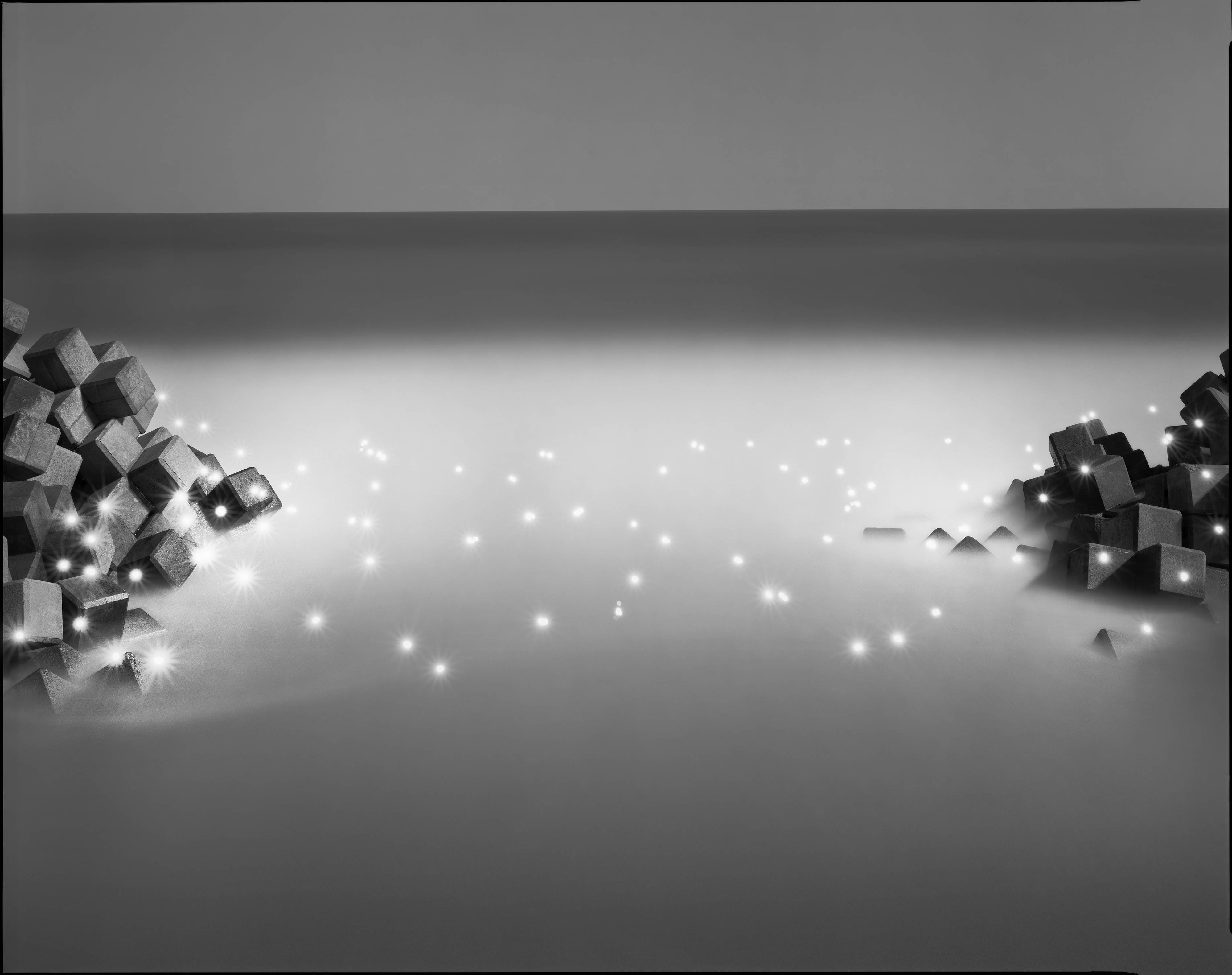Tokyo is one of the world's few great cities that you can walk around in the middle of the night in almost complete safety. That's not to say walking around for the sake of it will be viewed without suspicion. Drunk office workers making their way home, fitness freaks and dog-walkers are not too unusual a sight in the darkness, but they only reinforce the fact that the city at night is something to be traversed, rather than appreciated.
Tokihiro Sato came to prominence as an artist in the early 1990s, earning plaudits around the world for his series "Photo-Respiration." Using a penlight at night and a mirror during the day, the photographs in this series show trails or spots of light in darkened landscapes, of which probably the most audacious are scenes of central Tokyo. With long exposures of up to three hours, normally busy streets and city vistas become host to a multitude of flowing lines or dozens of orbs that recede from the foreground deep into the distance. As a side-effect of Sato's method, both highly public and liminal spaces alike are shown devoid of people and traffic.
While the lights trace Sato's movement in time and space, some images can appear as more anthropomorphic than others. One iconic interior shot of strings of light filling a stairwell is strongly reminiscent of Duchamp's "Nude Descending a Staircase No.2," while rocky seascapes in Iwate Prefecture look like experiments in spirit photography. In other cases Sato's training as a sculptor shows through, with objects redefined as glowing auras, and empty spaces given mass by webs of light trails.

















With your current subscription plan you can comment on stories. However, before writing your first comment, please create a display name in the Profile section of your subscriber account page.